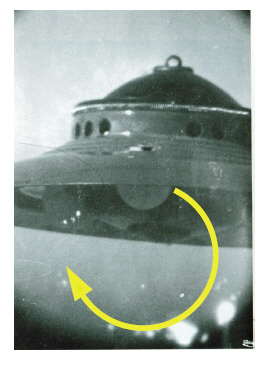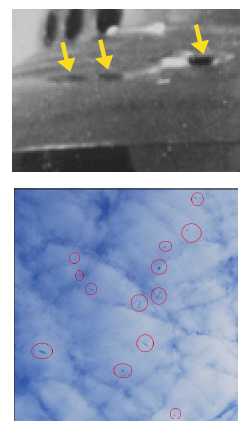The following presentation courtesy of Rene Erik Olsen -
Painter, Photographer and Researcher
© Copyright is property of the Principals of the Adamski Foundation.
Enhancements joint property of Adamski Foundation and Rene Erik Olsen.
The 20th November 1952 Contact
The three frames below were taken by George Adamski. The first one through his telescope and the next two with a Kodak Brownie camera. They were taken before the actual contact took place
This photo is a shot of the craft as it was moving away - after it had "posed" for a period of time for George Adamski in a small gully where Adamski was standing. He quickly used his Ihagee-Dresden Graflex camera attached to his reflector telescope (he took 7 photos in all with this setup) to take this successful shot before it "repositioned" itself (see photo above) although it is very blurry. This is the photo which was shown in the newspaper article some days after the desert events. I have done the best enhancements possible and the photo clearly shows a craft structure and the three "balls" underneath.
.jpg)
Image enhancement of the second Brownie camera photo taken by Adamski
The images shown are in order -
Image 1. Original frame taken by George Adamski with a craft showing just moving above a hillside.
Image 2. Raw image enhancement of part of the frame with the craft visible
Image 3. My finished enhancement of the sky, landscape and craft
Image 4. A zoomed version of image 3
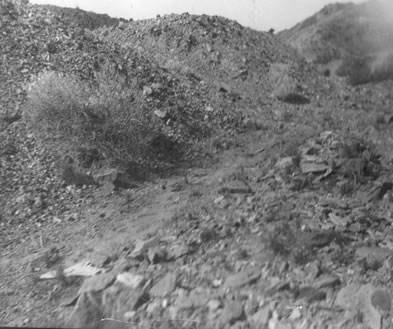
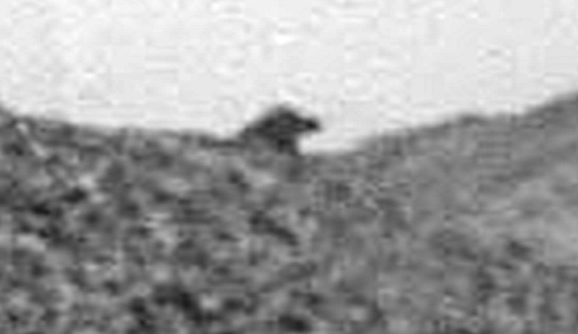
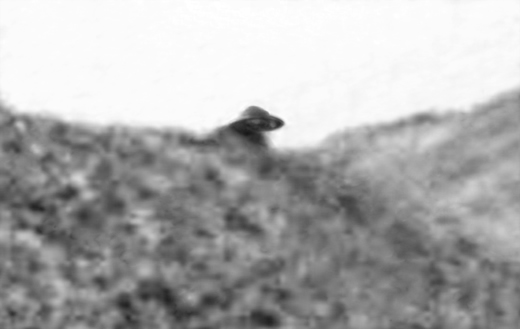
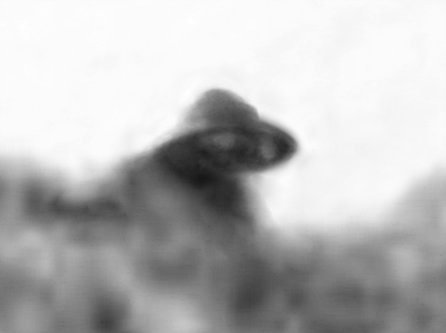
The fourth Brownie image (enhancement and enlargement) is for the time being not shown.
The fourth Brownie image just before the "person" waved to Adamski.
Enhancement and enlargement is being used in a book so it will be not be shown here for 6-12 months.
After that it will be shown again.
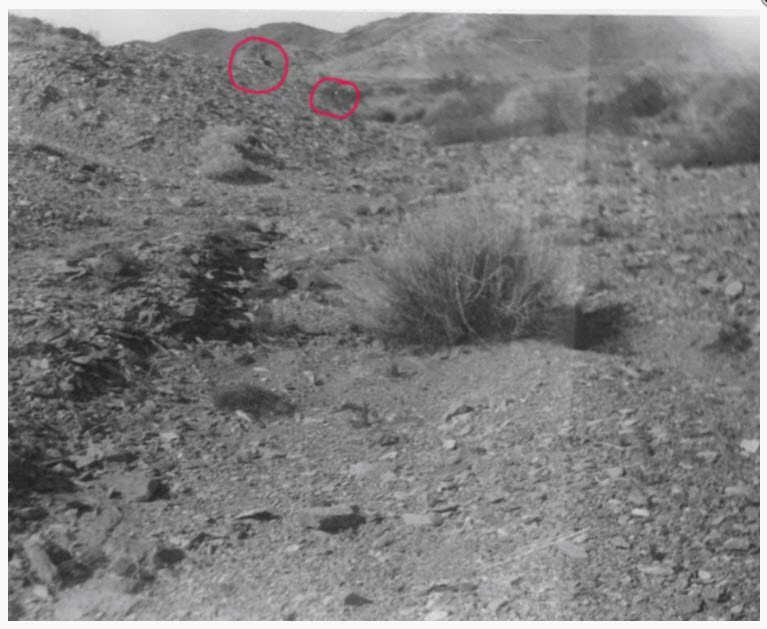
Five stills images from the Silver Springs movie -
processed in Photoshop
The last film which George Adamski took was in February 1965 at the Rodeffer house in Maryland.
He was a guest at the house of Nelson and Madeleine Rodeffer – in preparation for a press conference to show his latest films at the Mayflower Hotel on March 9th.
Friday the 26th February in the morning – George was alerted by a visitor who told “them to be ready with cameras” as they would be flying by.
When the time came later in the afternoon – only the 8mm film camera of Madeleine was used during the excitement. George’s 16 mm camera was not used.
As Madeleine was too nervous to use the 8mm camera – George took over and filmed the craft which was approaching the Rodeffer house.
First frame from Silver Spring film and the enhanced version.
On the left the orig. frame from the film and on the right the enhanced version - among other things the portholes in the cabin are clearly visible and the 3D form of the craft.
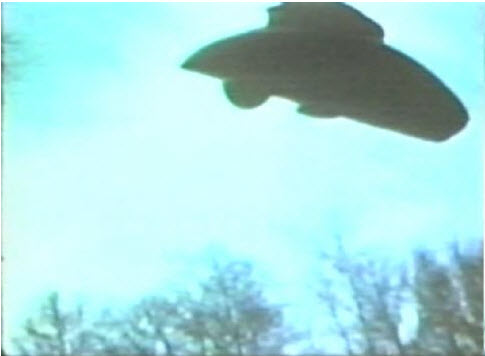
.jpg)
Second original image and the enhanced version
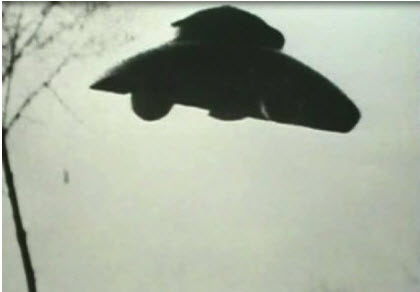
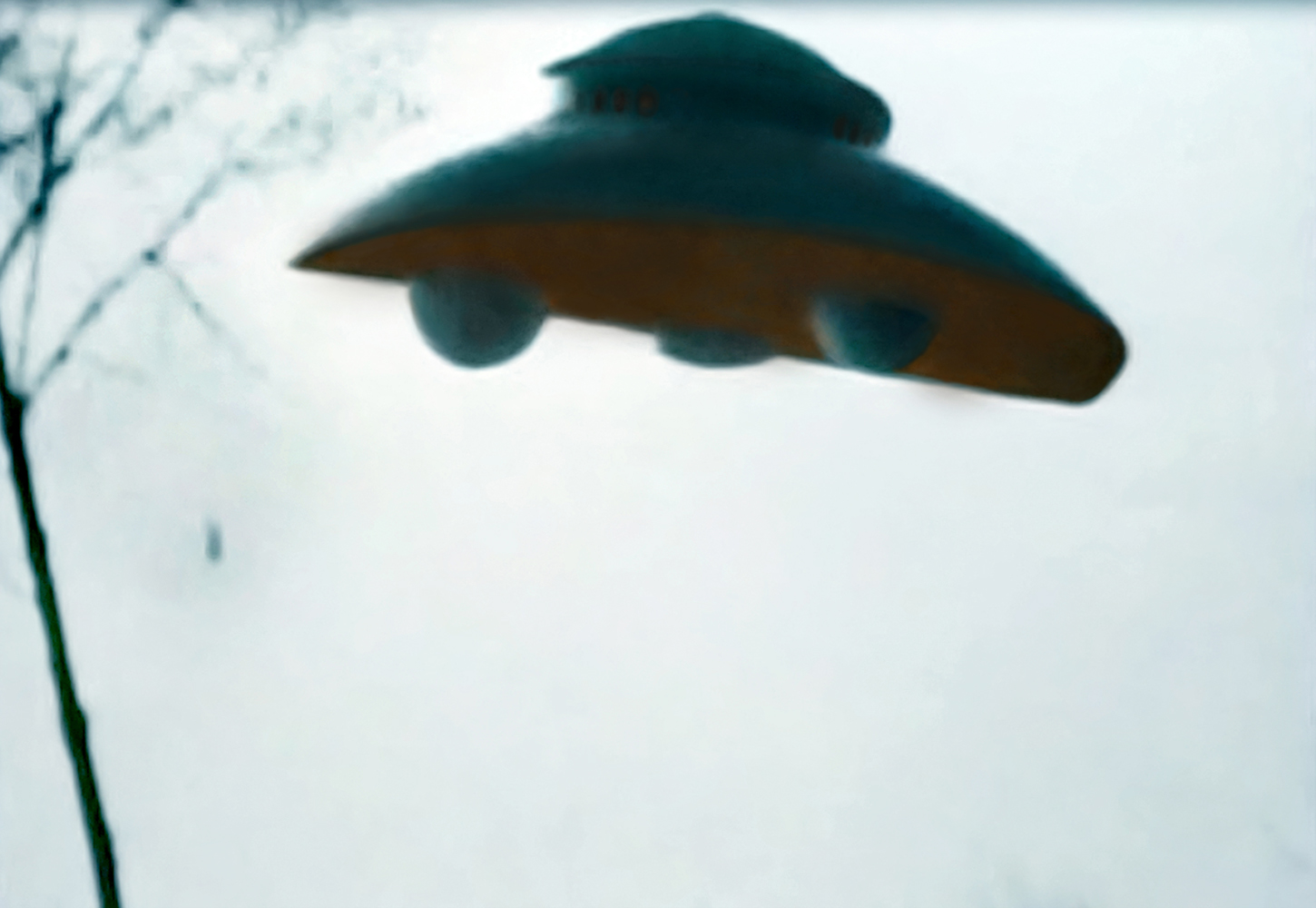
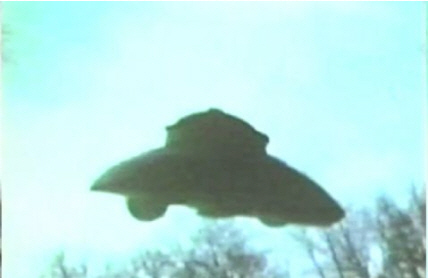
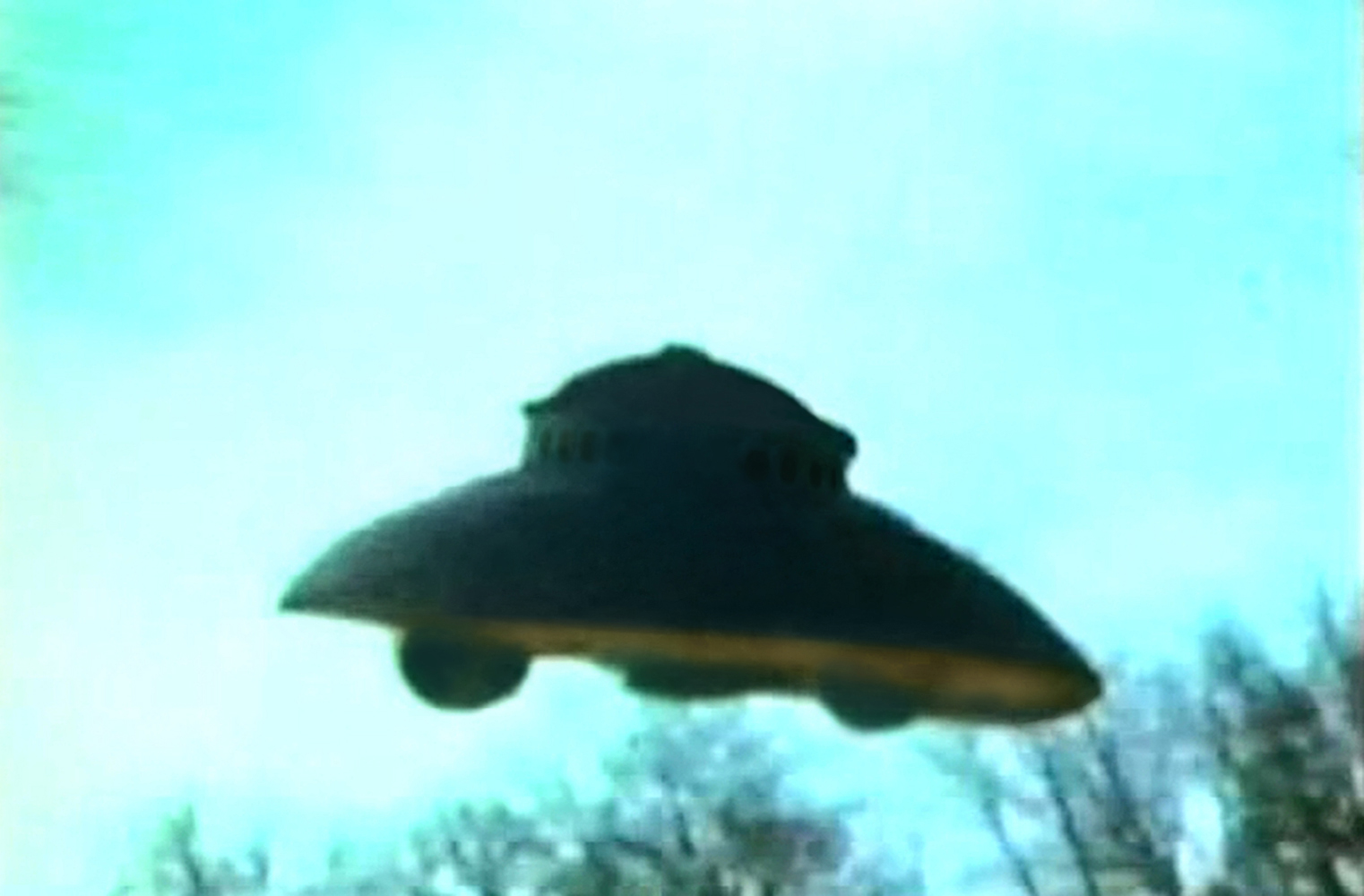
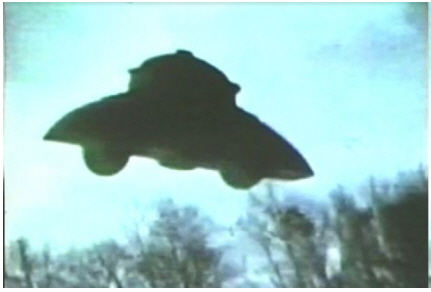
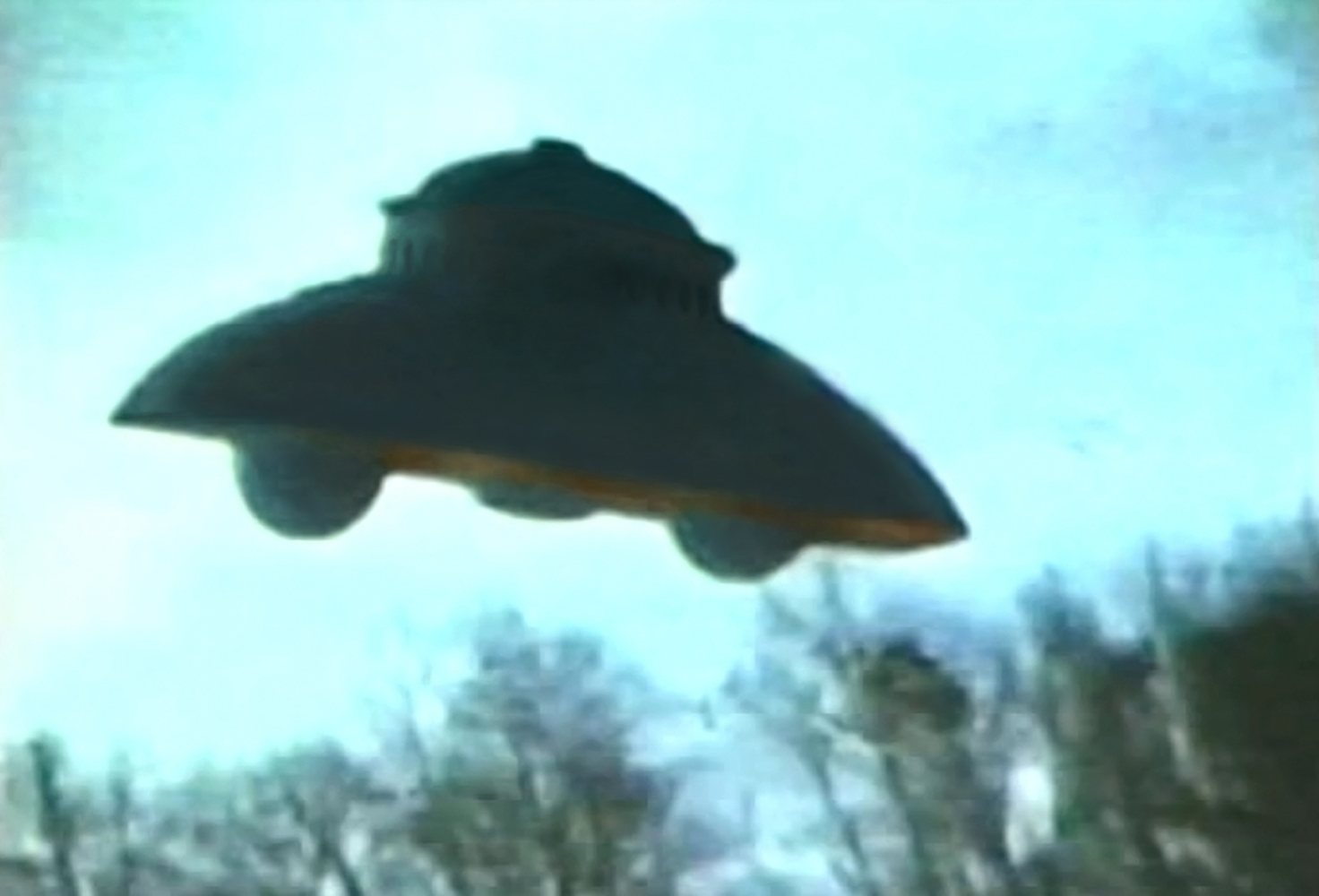
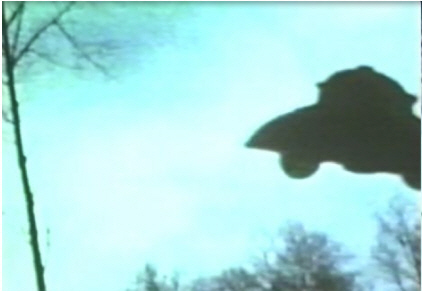
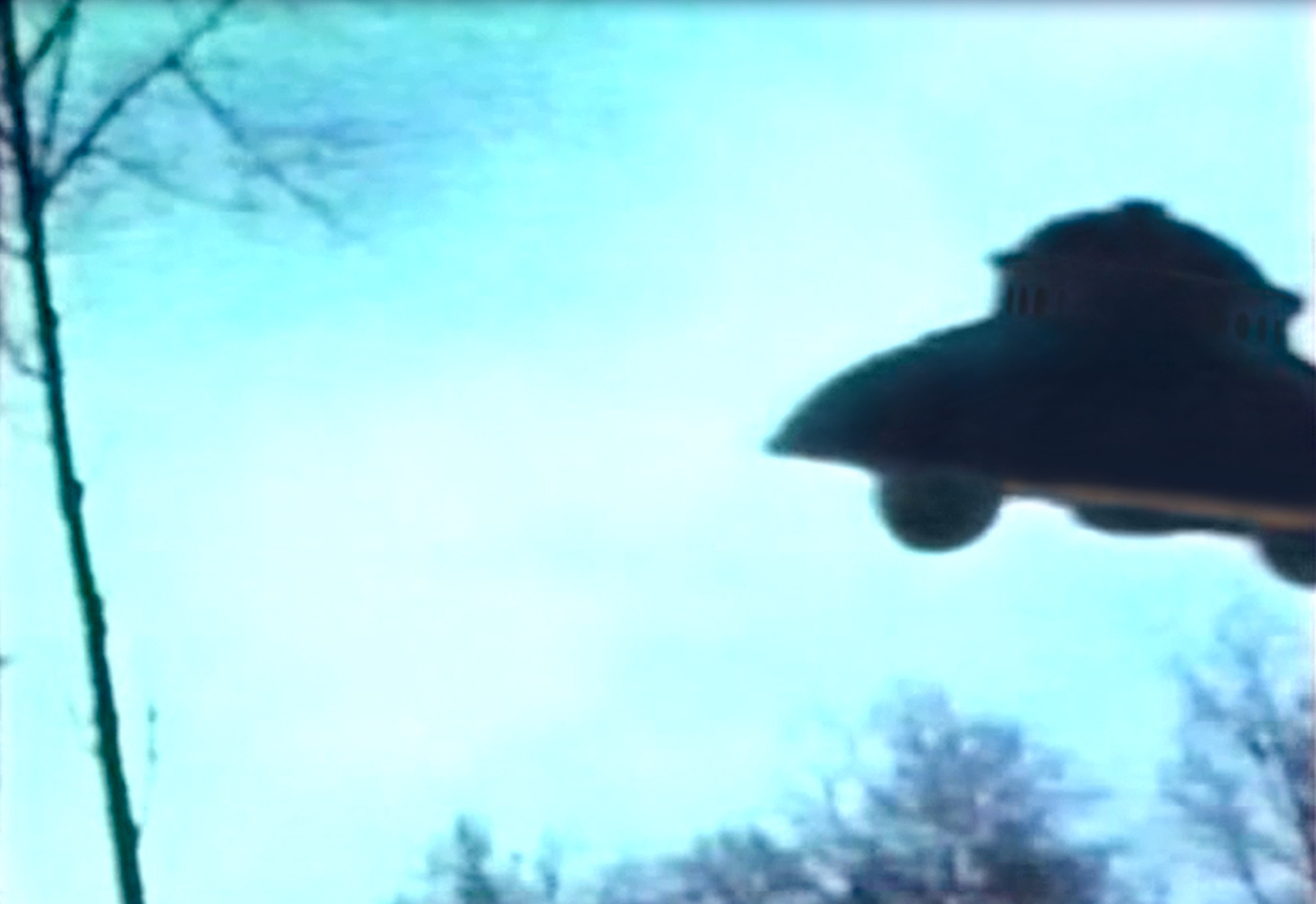
13th December 1952 - First photo taken on the day
This is the first photo which Adamski took - The object was too close for him to get the whole craft in the viewfinder -
this is a rendition of what it would have looked like - including the original clearly marked.
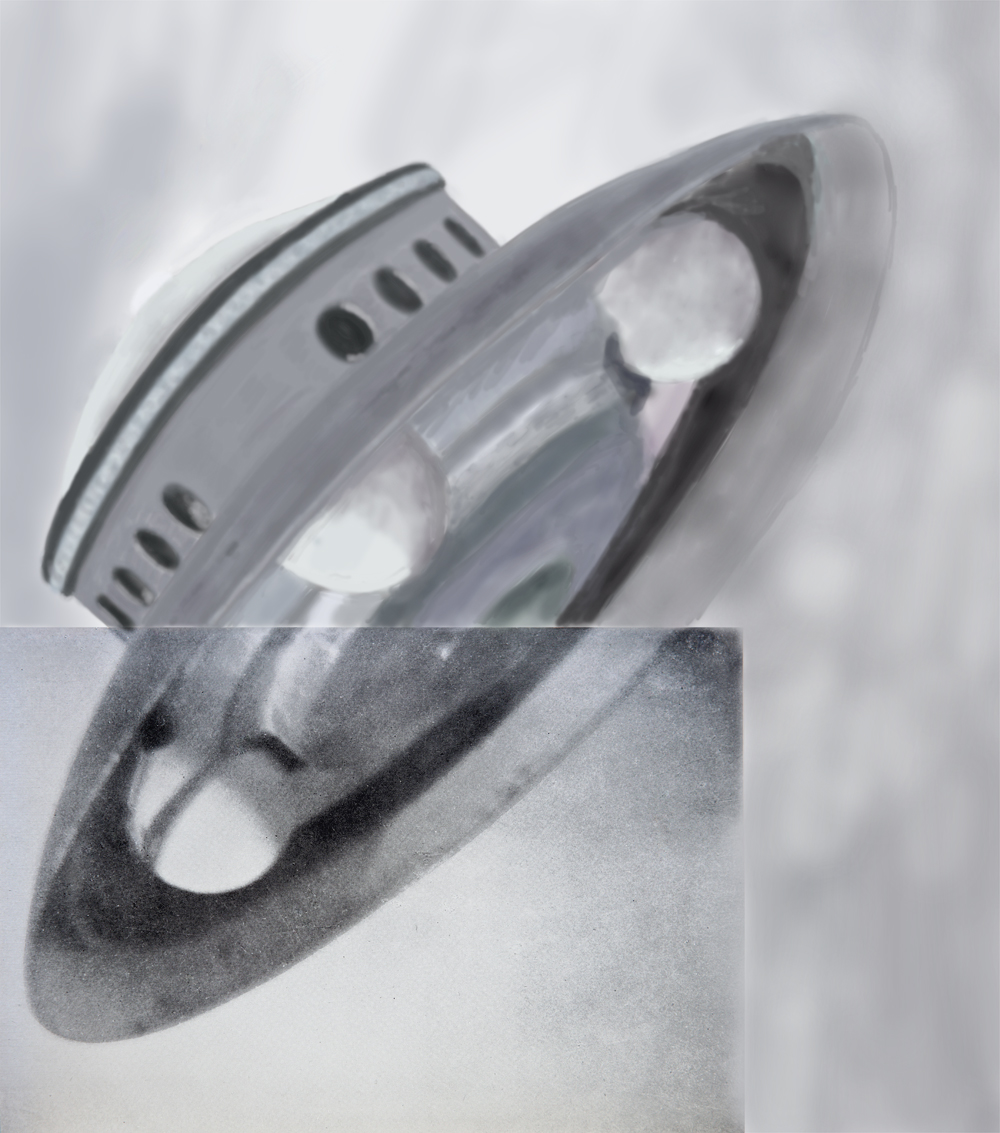
13th December 1952 - Second photo taken on the day
Here is the second photo of the four photos taken on that day by George Adamski. I have taken the original and added the missing part of the craft (left part and right part).
Nothing of the original has been changed. I have left the original clearly visible. Resolution is 1000 pixels by 1768 pixels.
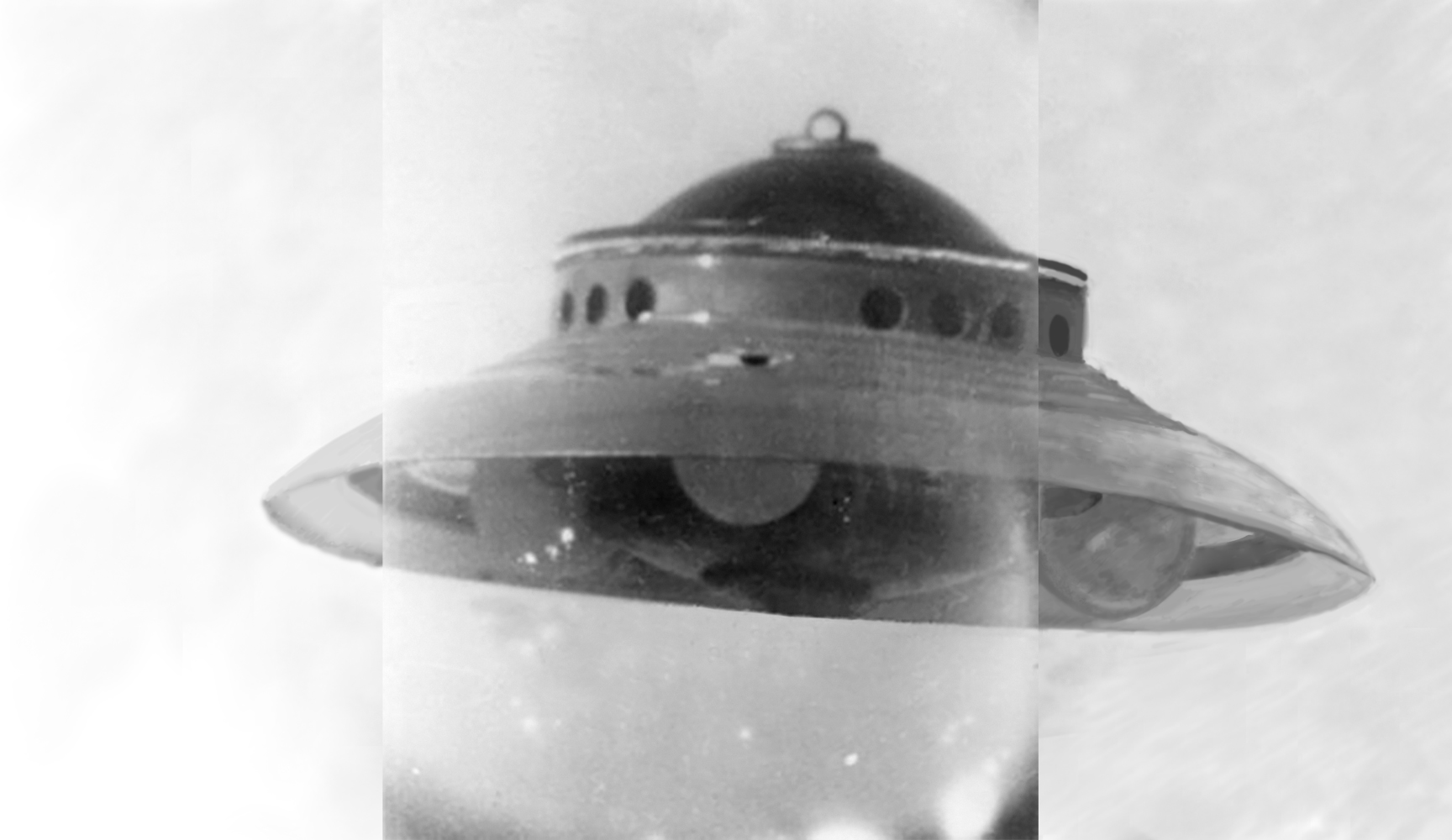
Third photo of Dec. 13th 1952
This is the third photo which Adamski took through his telescope - It moved a little upwards that is why the upper part looks a little bit distorted.
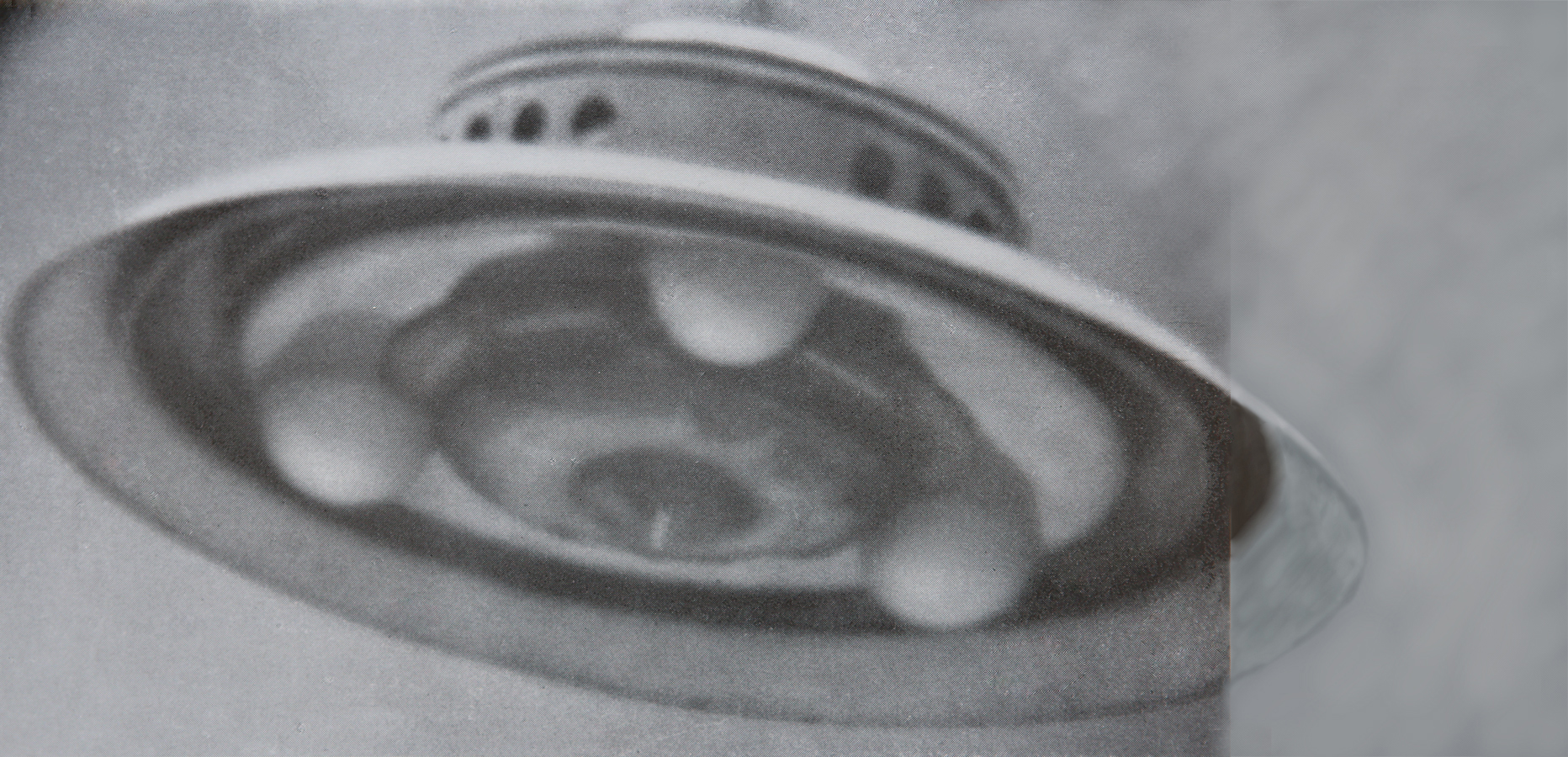
Fourth and final photo of 13th Dec. 1952
This is the fourth photo which Adamski took just as the craft began to move towards him. Only the right corner of the craft was not in view.
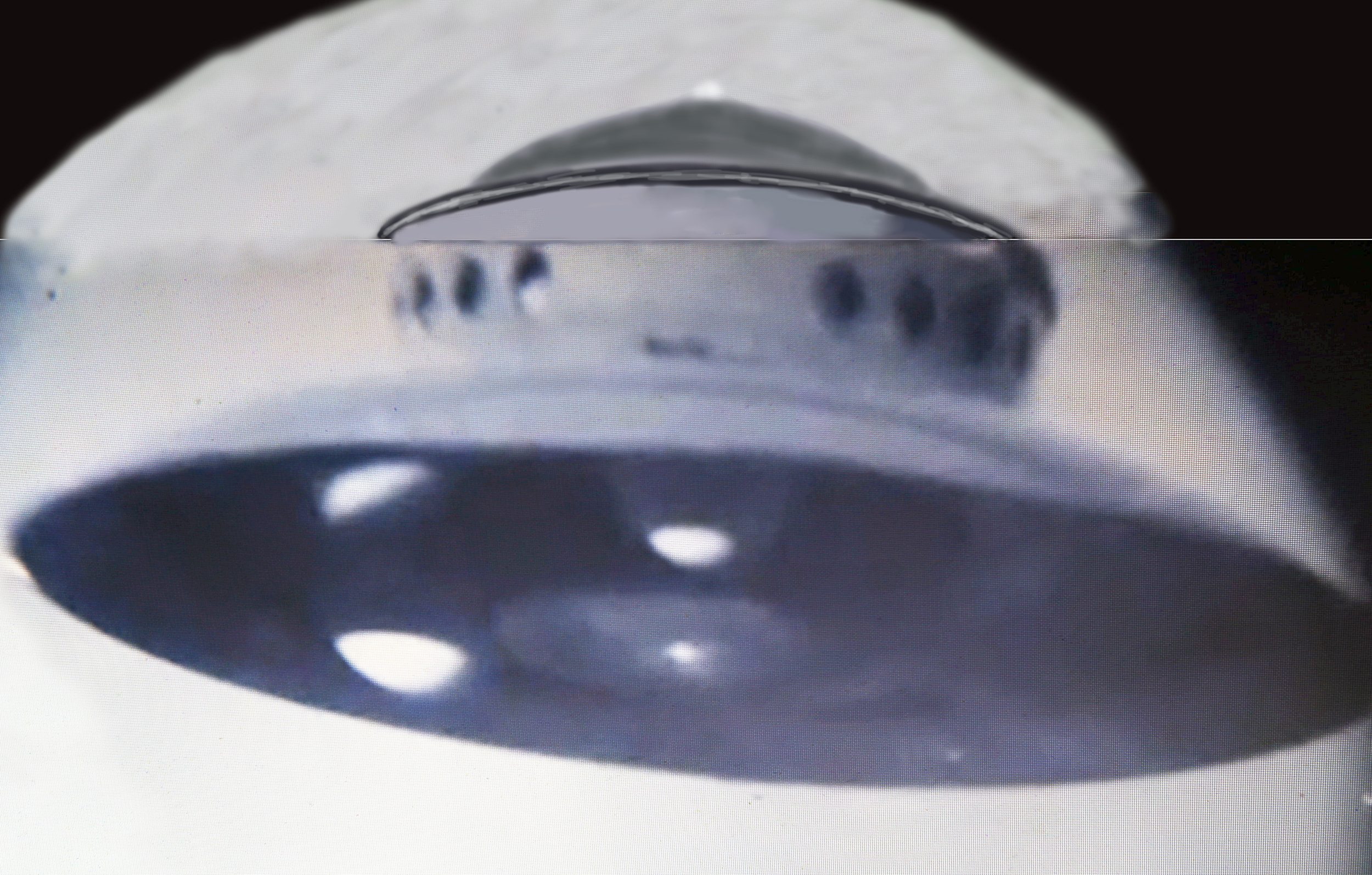
3D Views of Adamski Scout Ship
Adamski / Baker's Photo Analysis (Japan)
Baker's Photo had been set on a corner of Adamski issues long time. This Photo has very blur Scout Ship. So many people think it no clear Photo. However, Blur character maybe has any information about the Scout Ship behavior. Moreover Important point is to speculate on size of the Scout Ship. I hoped this Photo to make clear the evidence of the Scout Ship as REAL space craft.
Firstly, I found some character about this Photo.

| 1. Camera lens effect. It may be glitter of reflection. 2. Flange blur makes darken tree leaves 3. The part below Landing gear is lighter than other part. 4&5. ScoutShip blur of front flange edge is stronger than over edge of flange. |
Mr. Baker wrote a paper about his experience in Dec.13.1952 after day. This paper include his standing position from the Scout Ship. He stood at 24.6 feet from ScoutShip and ScoutShip was floating on 11 feet position from the ground. He took picture with Kodak Box Camera. This camera was popular in during 1930’s to 1950’s.I researched the specification of this camera .Kodak Box Camera focus was fix focus as 8 feet to infinity being clear. Shutter speed was 1/25th of a second.This spec. suggested the Scout Ship having floated over 8 feet and the Scout Ship size was over 5 feet needing not whole object was blur. Mr. Baker wrote a paper about his experience in Dec.13.1952 after day. This paper include his standing position from the Scout Ship. He stood at 24.6 feet from ScoutShip and ScoutShip was floating on 11 feet position from the ground. He took picture with Kodak Box Camera. This camera was popular in during 1930’s to 1950’s.I researched the specification of this camera .Kodak Box Camera focus was fix focus as 8 feet to infinity being clear. Shutter speed was 1/25th of a second.This spec. suggested the Scout Ship having floated over 8 feet and the Scout Ship size was over 5 feet needing not whole object was blur. |
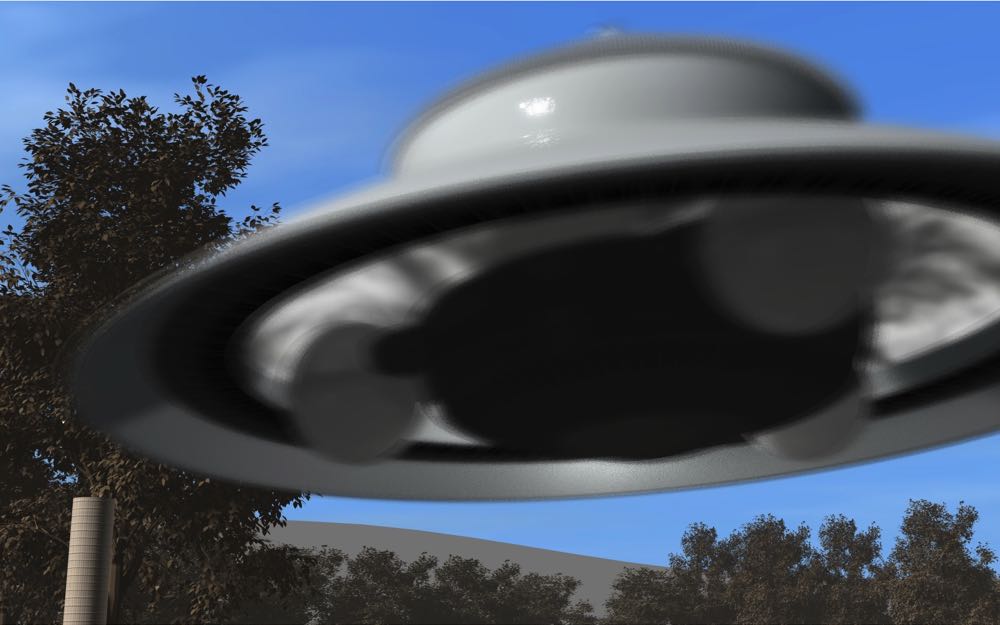
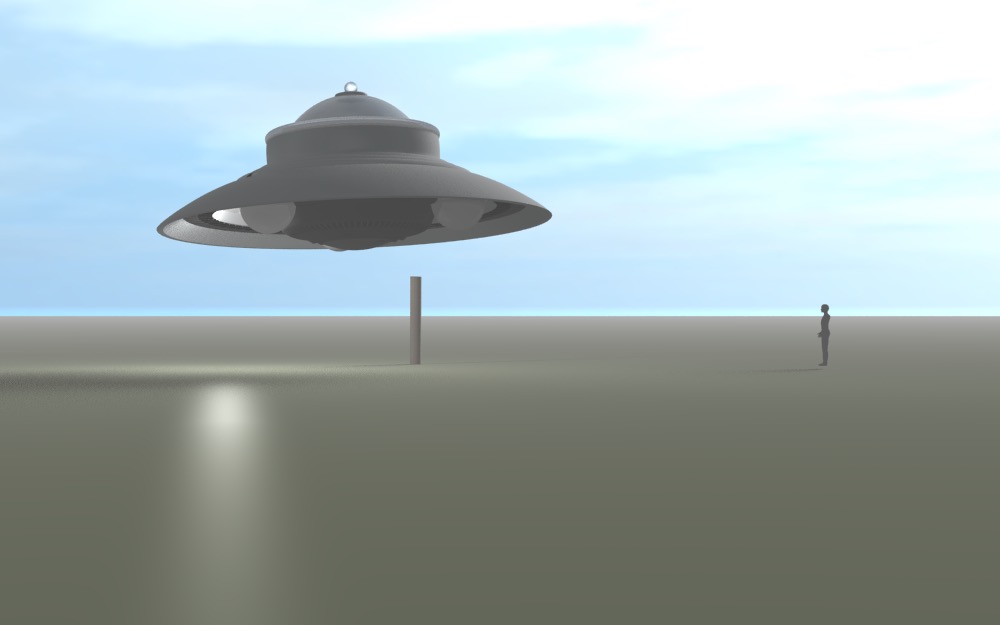
| These analysis were tested on 3D software to compare with the Adamski/Baker photo. Moreover, I tested the size was reasonable on angle of Camera or not. These 3D picture is set at same distance and angle of the photo's properties . And it sets to reproduce as rotated motion blur. This simulation shows very same effects as photo and tightens this analysis certainty up. This time, we know this photo was very important evidence of the morning encounter with the space craft in Dec.13. 1952. |
OF THE ACCUSATIONS REGARDING
THE COLEMAN LANTERN FIASCO
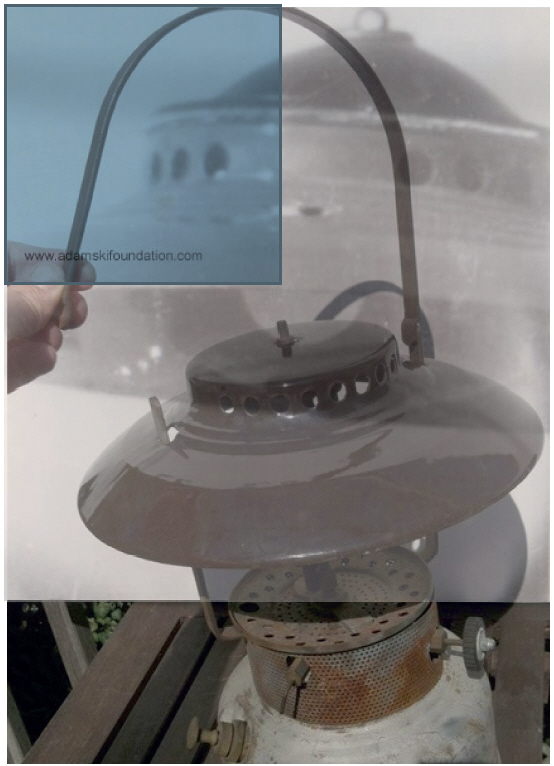
INTRODUCTION
| In 2012, the American ufologist Joel Carpenter published a study in which he declared that he had discovered the main element of the model used by the famous «Contact» George Adamski to make the photos of a «flying saucer» supposedly taken with his telescope on December 13, 1952 at Palomar Gardens. Even before his discovery, he established on simple observations the fact that the object photographed had to measure between 30 and 45cm in diameter, and that it logically had to be made by an assembly of several elements. He then proceeded from the idea that Adamski used a lampshade belonging to a lantern made in the 1930s. Carpenter then sought out the famous model on websites made by collectors, and found a lamp whose upper part was pierced with round holes, strongly resembling Adamski’s Venusian saucer. Indeed, when we put side by side the two images, the main structural characteristics seem to correspond, as we can see through the demonstration on the left: |

Very quickly, the Belgian skeptical researcher Marc Hallet hastened to relay the information on his personal site through an article whose title in French leaves no doubt: «FINALLY DISCOVERED! THE MODEL WHICH WAS USED TO MAKE THE FAMOUS ADAMSKI’S PICTURES». However, by examining them scrupulously, it turns out that the lines which define the structure of these two «objects» diverge very widely when we begin to compare them, so that it is seriously permissible to doubt this kind of statement. While Joel Carpenter conceded «subtle differences» in the location of the holes (see the demonstration on the right), he can be criticized for not having sufficiently taken into account other parameters that were essential to a more rigorous comparative study.
The comparison between these two images taken with the same angle of view and the same framing led me to draw their main structure lines we see in the foreground to check if they coincided. Here we can identify three: first, there is the outer edge of the «skirt» at the bottom (1), the joint between the «skirt» and the «turret» that overhangs it, immediately below the location of the holes (2), and finally the outer edge of this «turret» (3). Now, by making them correspond to each other, there are very clear discrepancies which can not be the result of chance, as can be seen with this second demonstration: |
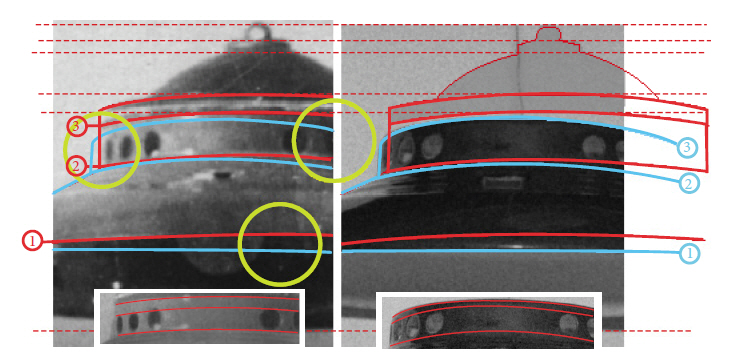
| The most remarkable in the Adamski’s picture is that these lines follow each other while remaining perfectly parallel, so much so that the portholes seem to line up along an almost straight line. This result contrasts sharply with what is observed in the photo of the lampshade. In fact, there is a much more pronounced curvature of the lines delimiting the base and top of the «turret», in comparison with the line drawing the outer edge of the «skirt», which follows a nearly rectilinear trajectory. This non-negligible distortion in Carpenter’s image suggests, on the one hand, that the object photographed by Adamski is of a different nature, but on the other hand, that it was realized under very different particular conditions. In reality, the explanation of the phenomenon (already glimpsed by the English writer Desmond Leslie) refers to the absence of parallax in the case of the photo obtained by Adamski. In order to eliminate parallax-induced errors, some telescopic sightings are equipped with a compensating mechanism which consists of a movable optical element for projecting on the same optical plane the image of objects located at variable distances and the images of the reticle. In view of this observation, it would be assumed that Adamski was able to photograph a distant object by means of a telescope. On the other hand, we would have to admit that it was technically impossible for him to reproduce the same effect with the use of a model and an ordinary camera. 2 - Radically Diverging Proportions This analysis is in addition to a new comparative study between two other images taken here from a different angle : |
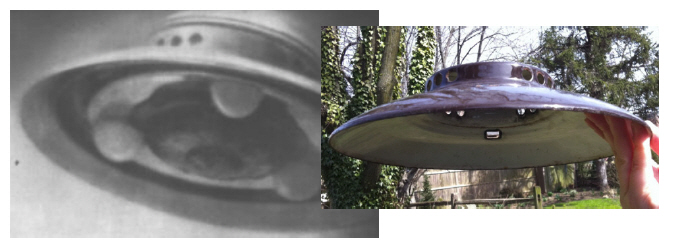
The picture on the left was taken by Adamski, the same day as the first one. She is in third position in
the series of four photos realized that day. The picture on the right was taken by Carpenter, revealing
the lampshade in its entirety (unlike our first example), with approximately the same point of view
in cons-plunged.
In order to succeed in this experiment, it was necessary to first switch the photo
of Carpenter towards the right in order to obtain the same angle of inclination that one sees on the
saucer of Adamski:
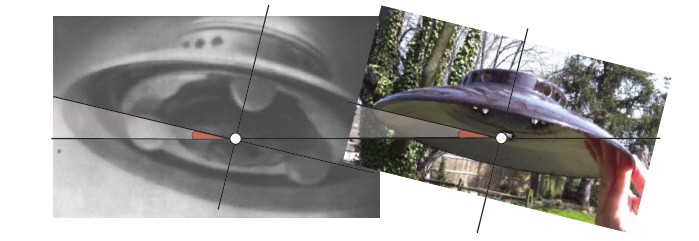
the series of four photos realized that day. The picture on the right was taken by Carpenter, revealing
the lampshade in its entirety (unlike our first example), with approximately the same point of view
in cons-plunged. In order to succeed in this experiment, it was necessary to first switch the photo
of Carpenter towards the right in order to obtain the same angle of inclination that one sees on the
saucer of Adamski:

| The second step consists in imagining on a three-dimensional plane, an axis of rotation which would cross the object from one point to another in space, actually materializing the two opposite points situated at the end of the Lower part under the «skirt» saucer. This part draws an ellipse. On a 2-dimensional flat surface, this axis actually represents the diameter of a circle, which represents the circumference of this circular part. It also comes to cut at right angles the central axis of the object, when it is projected again in 3 dimensions. The next step is to tilt the lampshade back from the angle chosen by Carpenter until it reaches the same ellipse as the one seen in the photo of Adamski (here in blue). This is done by changing neither the proportions of the shade nor the major axis (or diameter) of its ellipse. Thus, it is only necessary to extend in width the ellipse which delimits the circumference of its circular base (here in green), referring to the axis of rotation (here red), which remains fixed (see the green arrows in Figure 8). Finally, the diameter of this ellipse must be plotted on exactly the same dimensions of the Adamski saucer. It is then that the superimposition of the two photos reveals differences, not slight, but sufficiently significant in terms of proportions, especially at the level of the «turret» overlooking the lower part which is the main structure of the object. Concerning the lampshade, this part tends to disappear under the «skirt», whereas it is still clearly visible in the photo of Adamski, emerging clearly above the lower part (see Figure 2, 3, 4 and 7). |

It is therefore highly unlikely that such deviations of proportion will be shown on such a large scale for a single lampshade model,
even though it may have been manufactured in different factories over several years, such as Joel Carpenter tried to justify.
3 - The Atmospheric Effect
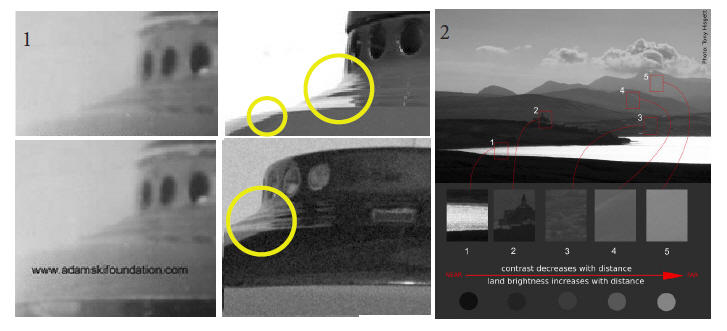
| Sir Desmond Leslie (co-author with Adamski of Flying Saucers Landed) has always defended the «graying effect» of the atmosphere to explain the absence of contrasts, clearly visible on the surface Of the object photographed by Adamski. In the field of photography, this phenomenon is caused by the humidity and dust present in the atmosphere, so that it is impossible to match a model to the foreground with a very distant background. The effect produced by a telephoto lens is a certain graying and flattening which is virtually impossible to artificially reproduce. We can notice this difference in hue as shown in figure 1. This effect therefore tends to reduce the contrasts of distant objects from a photo lens and located in the middle of a panoramic landscape. In this case, the farther you go in this landscape, the more the shadows tend to soften, and the more the lights lose a part of their brightness, owing to the slight opacity of the atmosphere through which they pass. Conversely, the parts in the shadow are partly illuminated by the light that falls, not on them, but on the atmosphere through which they are seen. As a result, the atmospheric effect tends to give soft grays to distant objects and to erase all violent contrasts of shadow and light. This is perfectly illustrated by illustration 2, where the mountains in the distance gradually take on the color of the sky. |
|
| 4 - A Hole or a Reflection? The most evocative detail in favor of the discovery of Joel Carpenter is the hole that appears in the center of his model. It turns out that it coincides rigorously with what appears to be on the photo of Adamski a luminous reflection on the «skirt» of the saucer. On the shade, this is one of the holes necessary for the fixing system of this upper part of the lamp. The resemblance is indeed astonishing: However, when we make a quick comparison between photo 2 and 3, we notice that this hole does not show the same aspect, while it is the same object, photographed exactly under the same angle. If picture 3 shows the repainted lampshade to give it more clarity, picture 2 shows this lampshade without the use of an artifice. On the latter, the hole reveals the interior of the structure. Likewise, no naturally produced light source emanates. On the contrary, Joel Carpenter’s second experiment (photo 3) shows the hole with a white area that looks purely artificial, having absolutely no relation with a reflective part. Just compare this area with the reflections present around the metal surface to realize that they have nothing in common. In the photograph of Adamski (photo 1), we note that it reproduces in an identical way the effect produced by the reflections that are at the level of the «turret», so that one can actually speak of something reflecting the light. |
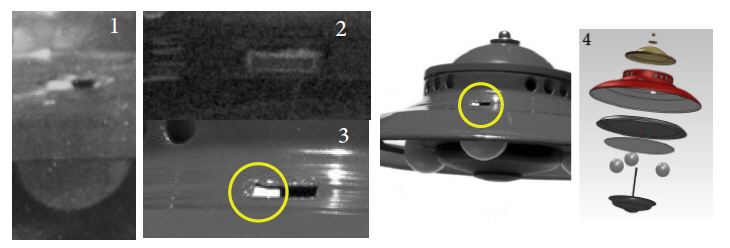
| It is hard to believe that this kind of aberration is of natural origin. First, how can a simple hole reflect the light. In addition, an observer in front of a hole drilled in a hollow structure, which is further closed from below thanks to other elements joined together (illustration 4), would see nothing but the darkness of the interior , As here with the first photo experience of Carpenter (photo 2). Under these conditions, a hole never produces a reflection of light, unless an artificial source has been placed inside the structure to diffuse its light. However, this hypothesis is difficult to accept, because if the portholes had been holes, they would not have been so dark in the picture. The physics of optics has its own laws, and these apply universally according to parameters sufficiently precise to commit any form of error. Also, the luminous reflection visible in this place on Adamski’s plate can not have the characteristics of a hole, all the more so that Carpenter failed in his attempt to recreate it naturally on a photo film. Once this conclusion has been established, one would be entitled to wonder whether the author himself did not want to play the magicians by knowingly retouching this part of the image in order to give his model the appearance of the Venusian flying saucer. Such an operation could easily be interpreted as a form of deceit, for this kind of optical incoherence would directly challenge the idea of a hole in the image of Adamski, failing the whole of his demonstration. |
The whole problem is to detect the exact origin of what is called now a reflection. By carefully examining this area of the plate, we can very clearly see that the dark part to which this reflection seems to be associated, is repeated a little farther on twice.These two «artefacts» follow each other very closely one behind the other and seem to follow the same path. Also, they seem having approximately the same size compared to the shadow supposed to be the location of the hole on the lampshade. Two hypotheses are likely to provide an explanation for this unusual manifestation on the film. One of them, of artificial origin, is that it was produced by the object itself, that is to say, not through an orifice, but by a kind of protruding structure. If we refer solely to Adamski’s testimony, he was referring to a sliding door situated «at the center» of the flank of the craft, thus corresponding to the spot observed. |
| To conclude with the structural differences between the two objects, we must also look at details that are apparently negligible but still have their importance. Here is a comparison at the end of the «skirt», where the reflections of light betray a finely chiselled edge on the Venusian saucer, and on the contrary, a much coarser edge on the side of the lampshade. Note that all the versions of this model put on line by the collectors present the same aspect at this place of the structure. If we assume that Adamski used one of them to make his model, it makes sense that this detail would have appeared in the picture, which is far from the case, as shown here: |
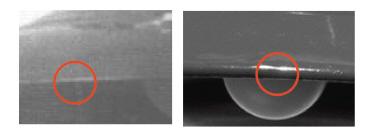
Numerous elements make it possible to doubt the dating of this model. We have just to do a closer look at the file to learn in reality that Joel Carpenter was not the first to have made this discovery, as one might think. The story goes back to an email addressed to Marc Hallet by one of his correspondents of Canadian origin, named François Beaulieu. On April 19, 2010, a skeptical researcher who hid behind the pseudonym of «Strato», the latter once again discovered the antecedent of a discovery. At the request of Hallet, Mr. Beaulieu immediately contacted the «Strato» (without anyone knowing how), which strangely told him not to wish to give up his anonymity. From there, questions remain, as Marc Hallet admits, which, moreover, minimizes this type of information: «Has his intervention influenced Joel Carpenter, or did the two researchers independently arrive at the same results? That is what I do not have to decide here». |
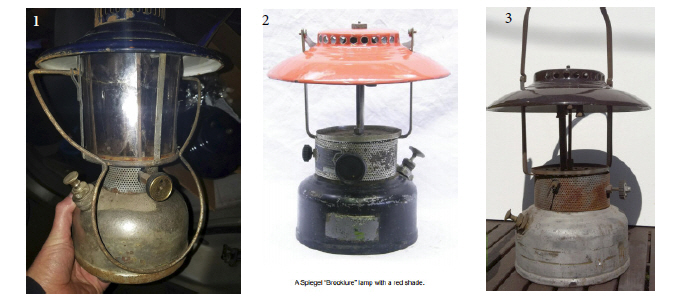
It should be noted that the main feature of this part of the lantern is to be a detachable part which can be very easily dissociated from the pump which supplies it with fuel. As a result, it is very possible that they were designed at a later date in relation to the other parts, in order to be finally adapted to this old model, perhaps as part of an extremely well-crafted communication strategy. It must be known that the rumor of the lantern was already at the beginning of the Adamski affair among the ranks of the skeptics, who had to be impatient for a model convincing enough to be finally presented to them. But to date, nothing can confirm or deny this kind of scenario. CONCLUSION This study paper is intended to re-examine the conclusions of Joel Carpenter concerning the critical analysis of the object present in the photos of George Adamski. A bunch of clues converge towards the idea that they show something much more complex to interpret as might be suggested by a large object, that can not be reduced to Carpenter’s demonstrations and experiments alone. Indeed, an in-depth analysis thanks to the simple use of rules attributed to the optics makes it easy to contradict the elements contributed by the American researcher, which do not respond to certain important inconsistencies observed at different levels. Therefore, the scientific community has now to seriously accept the validity of these photos. In the same way, their authenticity should then definitively conclude to the truth that we are not alone in this universe, and that we have already been visited by other intelligent beings coming from others planets. |

